Canon’s mirrorless camera lineup is finally coming into its own. The R5 and R6 cameras have improved on the first designs, and the RF lens line finally has enough options to make any photographer happy.
Aftermarket lens makers are stepping up their games, too, with more offerings for the new bayonet mounting system.
Here’s a look at the best lenses for the R6 for any type of photography.
This lens is neither the fastest nor the absolute best that Canon makes, but it has the widest zoom range of any of the L-series lenses.
With a constant f/4 aperture, the lens allows for plenty of creative control for anything from landscapes to portraits.
To top it all off, it’s not too big, either.
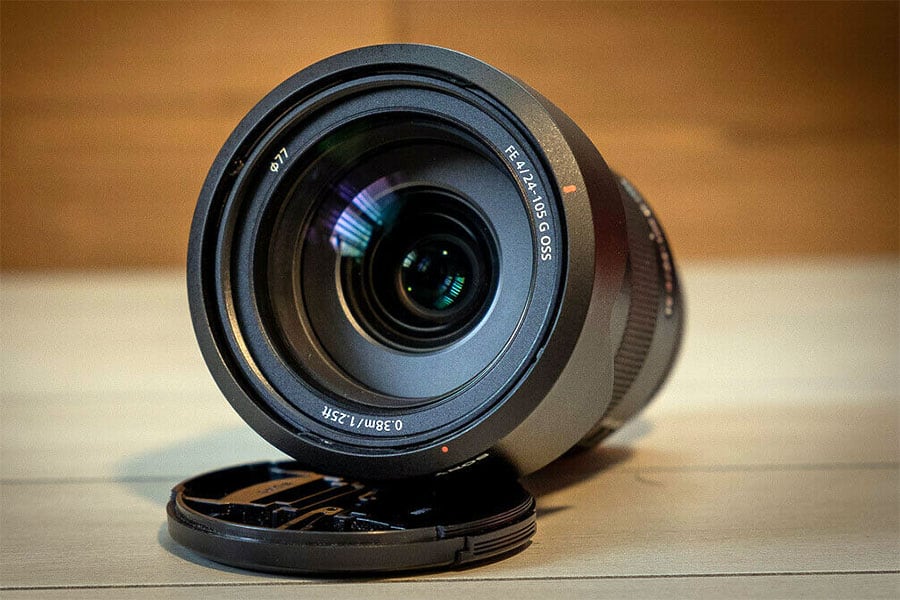
Like other RF lenses, it features a multi-function control ring. It’s got IS that offers up to five stops of shake correction.
It also has Canon’s newest autofocus motor technology, the small and quiet Nano-USM.
These new motors are quiet for video and super fast for accurate autofocusing.
Besides the apparent versatility that this lens’s zoom range offers, its greatest forte is its smaller size. L-series lenses can get very bulky.
The 24-105 is designed with compactness in mind. It’s 4.2 inches long and weighs 1.54 pounds. It’s perfectly balanced with the R6’s body to make a package that’s easy to carry all day.
If the L-series RF 24-105 is still larger than you’d like to carry, check out the Canon RF 24-105mm f/4-7.1 IS STM.
Money and weight are saved on this lens by ditching the constant aperture. If you shoot mostly landscapes, this could be a good, fast lens.
For portraits and other uses above 50 mm, you’ll want to limit your shooting to daylight or studio photography.
Compared to the RF 24-150 mm f/4L, this lens is an inch shorter and about half the weight.
If size and weight are less important to you, I would choose the 24-70 mm f/2.8L.
This lens does not have built-in IS, but the camera’s IBIS will quickly negate that problem.
Compared to the RF 24-105 mm f/4L, this lens is much larger and heavier.
It’s also double the cost. But the extra light abilities that f/2.8 will let in are sure to be appreciated by portrait and event photographers.
It’s a wonderfully well-built lens that never disappoints in terms of image quality.
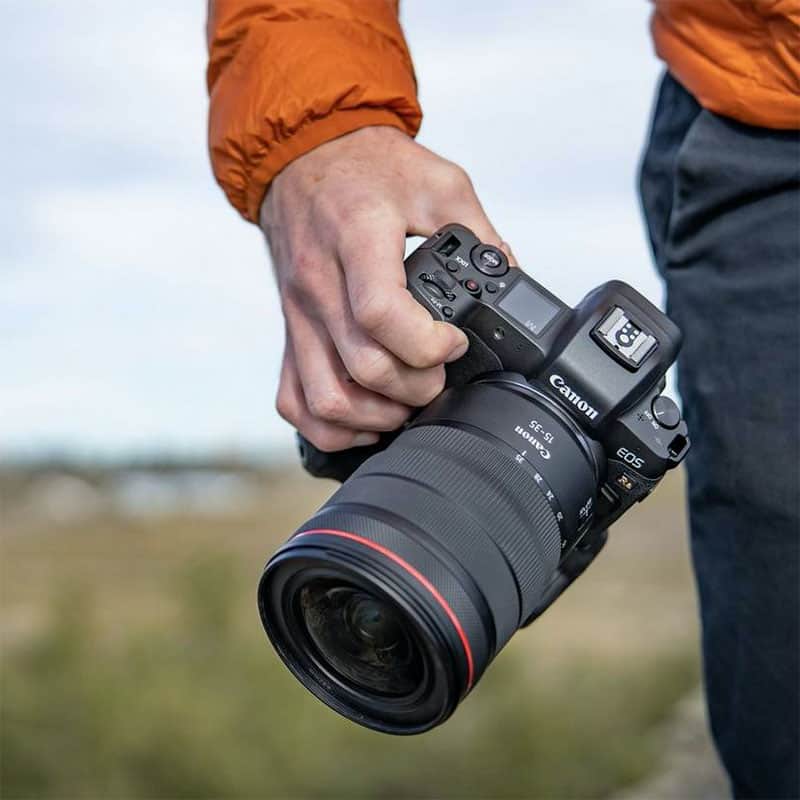
If you’d like something even faster, Canon has the RF 28-70 mm f/2L USM.
This lens is a monster, but it’s also a portrait photographer’s dream. It takes 95 mm filters and weighs 3.15 pounds.
If you need to zoom in a little tighter, you can’t go wrong with the RF 70-200 mm f/2.8L.
This lens has one of the best IS systems Canon makes, with a selector for steady shots, panning shots, or video.
It also has a focus range limited switch to ensure that its focus remains zippy in all situations.
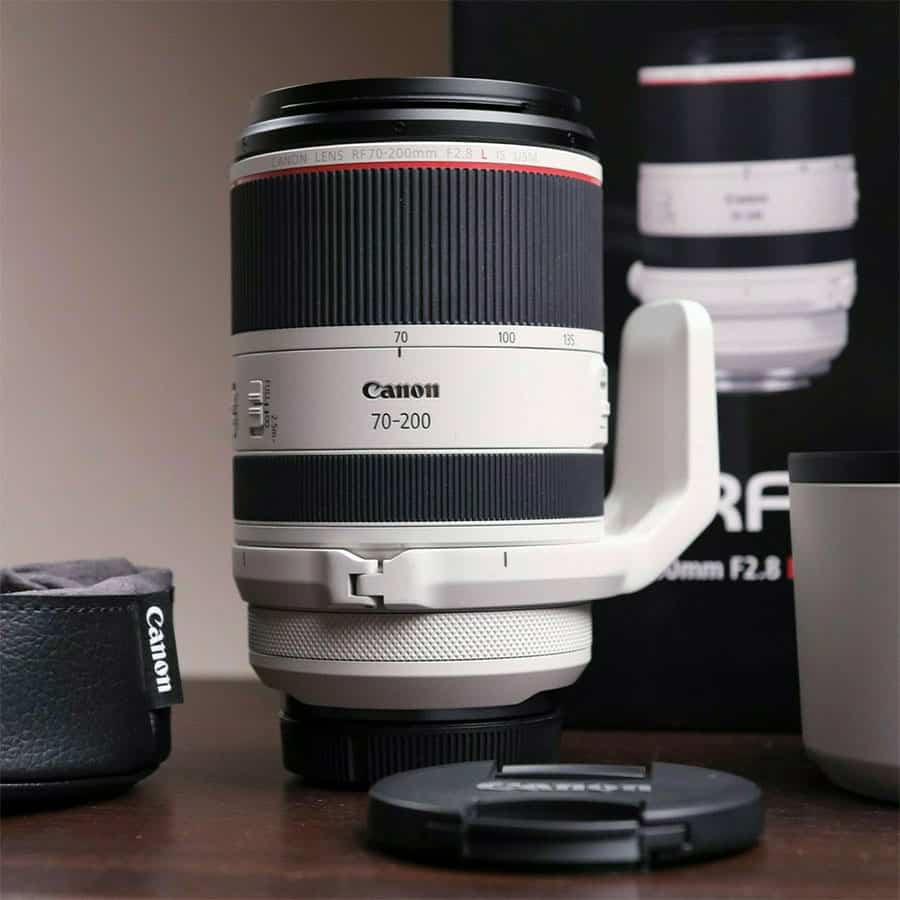
The lens redesign got a little more attention than some others from Canon when they brought it over to the RF lineup.
It’s much smaller than the older EF on which it is based, with an extending design that saves space in your camera bag. At 70 mm, the lens measures only 5.75 inches long, and it extends to 8.05 inches at 200 mm. It weighs 2.36 pounds.
While wildlife and sports photographers will love this fast lens, it’s an outstanding portrait lens when coupled with the full-frame R6.
The bokeh is smooth and pleasant, and the ability to zoom quickly allows for some outstanding creative control.
Wildlife and sports photographers will want something with even more reach, so luckily, Canon is now making the RF 100-500 mm.
It’s got an impressive close focusing distance of only 2.95 feet, making for some fantastic closeups.
This isn’t a constant aperture lens, but the compactness means that you can carry this lens in the field all day and not break your back.
It’s got some other excellent features, including a torque ring that helps you fine-tune the zoom ring’s response.

There’s also an intelligent window built into the lens hood for filter adjustments, an idea I think is long overdue.
At 100 mm, the lens is 8.17 inches long, and at 500 mm, it is 11.71 inches long. It weighs three pounds, and it comes with a removable tripod mount.
Landscape and architecture photographers will swoon over this newest addition to the L-series lineup.
It’s got IS for low-light shooting, a rarity in wide zooms. And its super-wide 15 mm focal length means you’ll never be wanting for something wider.
From astrophotography to mountain ranges and from rowhouses to skyscrapers, this lens is a wonderful companion.
The lens weighs 1.85 pounds and accepts 82 mm screw-on filters.
The fastest prime that Canon currently makes is the RF 50 mm f/1.2L.
It’s a beautiful lens, and for those who need the absolute fastest option, this is the one to get. At 50 mm, it’s great for portraits, product photography, and street work.
A slightly less expensive and smaller option is the Canon RF 50mm f/1.8 STM. This lens is much more in the “nifty-fifty” class–it’s small, lightweight, and inexpensive.
It’s a popular lens for turning your R6 into a compact, go-anywhere machine.
To match the fast f/1.2 prime lenses that Canon makes, their best portrait lens is the RF 85 mm f/1.2L.
Fast and with beautiful bokeh, this lens pushes the limits with new lens coatings.
It has an Air Sphere Coating (ASC) to help reduce aberrations and resist flare and ghosting. It also has a fluorine coating to help repel dust and fingerprints.
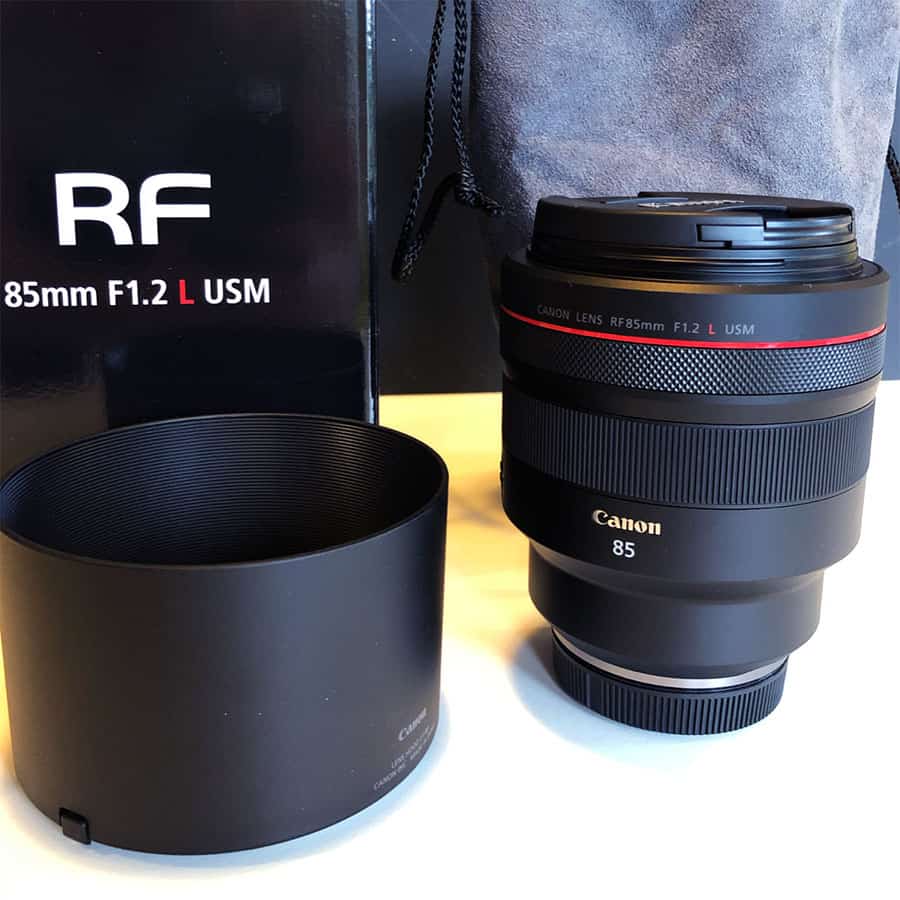
The lens also has Defocus Smoothing (DS), which produces even smoother bokeh.
But, the RF 85 mm f/1.2L is a big lens that takes 82 mm filters and weighs 2.63 pounds.
A less expensive portrait option is the reliable Canon RF 85mm f/2 Macro IS STM. It’s also one of the few Canon prims to offer real macro capabilities.
It has IS and a wonderfully small and compact form factor. It weighs just over a pound and is 3.5 inches long.
Canon’s wide-angle RF prime lens collection is still lacking a few things.
The best option in this range is their standard-level RF 35 mm f/1.8 IS Macro, a counterpart for the RF 85 mm f/2 Macro.
The lens is sharp and fast, making it an excellent carry-around lens for travel.
There’s not much it can’t do well, with its wide focus distance range and small size. I personally really like 35 mm lenses, and this is one of the best.
Canon’s exceptional RF 15-35 mm f/2.8L is a thing of beauty; there can be no doubt.
But many of us want or need something for the occasional landscape or interior architecture photo that doesn’t break the bank.
I’ve been using these affordable Rokinon lenses for many years now, and I’ve never been disappointed.
They’re sharp and fast, and their price is perfect for getting you a focal length that you might not want to spend much money on.
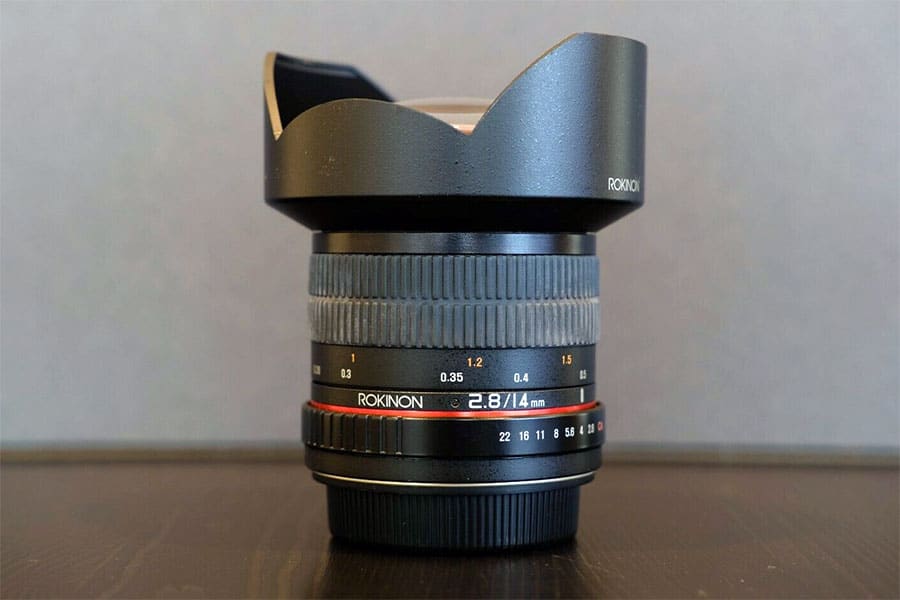
The new generation of manual focus Rokinons is weather-sealed and much sharper looking aesthetically than their older counterparts.
Remember, these are fully manual lenses that will require you to set the aperture manually too. But at well under $500, you can’t go wrong.
R6 Lenses - Buyer's Guide
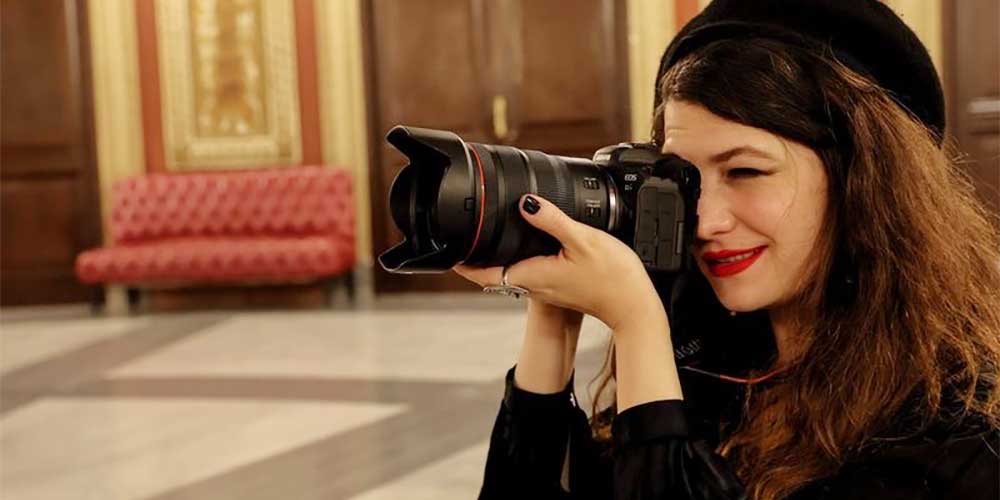
Canon Lens Labels and Naming
The RF-mount system is Canon’s newest addition to their lens lineup. With its entry, there are now four different types of Canon autofocus lens on the market.
Since many websites lump them together in searches, it’s essential to know exactly what you’re looking for.
For SLR cameras, Canon makes the EF and EF-S mounts. The EF lenses are used with full-frame sensor bodies, while the EF-S lenses work only with APS-C sensors.
For mirrorless systems, Canon makes the M-mount lenses for their EOS M-series camera bodies.
These cameras all have the smaller APS-C sensor. Full-frame mirrorless cameras are part of the EOS R-series, and they require RF-mount lenses. The mount size is related to the size of the sensor.
Canon opted to make a separate mounting system for their mirrorless APS-C chipped cameras because the form factor allowed for smaller lenses.
This has allowed the company to market the M-series bodies as a much smaller and lighter alternative to other options.
It’s important to understand that each lens, EF, M, and RF, have slightly different bayonet mounts. To connect one to the other, you’ll need an adapter.
Your R6 has a full-frame sensor, so you can’t mount a lens made for a smaller sensor on it. You can’t use M or EF-S lenses on it, but you can use an EF lens made for an SLR full-frame camera.
In addition to the mount type, Canon lenses are labeled with some other terminology.
- “L” indicates an L-series lens, which is at the top of the Canon lineup. These lenses have the best optics and the best construction that Canon has to offer.
- “IS” is short for image stabilization. These lenses have optical stabilization built-in, which you to hand-hold the camera and shoot with lower than normal shutter speeds or when shooting moving video.
- “USM” stands for ultrasonic motor, the standard autofocus system of many of Canon’s lenses. It’s quiet and accurate, but the quality greatly depends on the lens. An L-series USM lens will work far better than an entry-level lens with the same designation.
- “STM” means stepped motor, and it’s Canon’s newest autofocus technology. It’s much quieter and smoother than the entry-level USM motors, making these inexpensive lenses excellent for video. They are also tiny and compact.
Using EF Lenses on the R6 with an Adapter
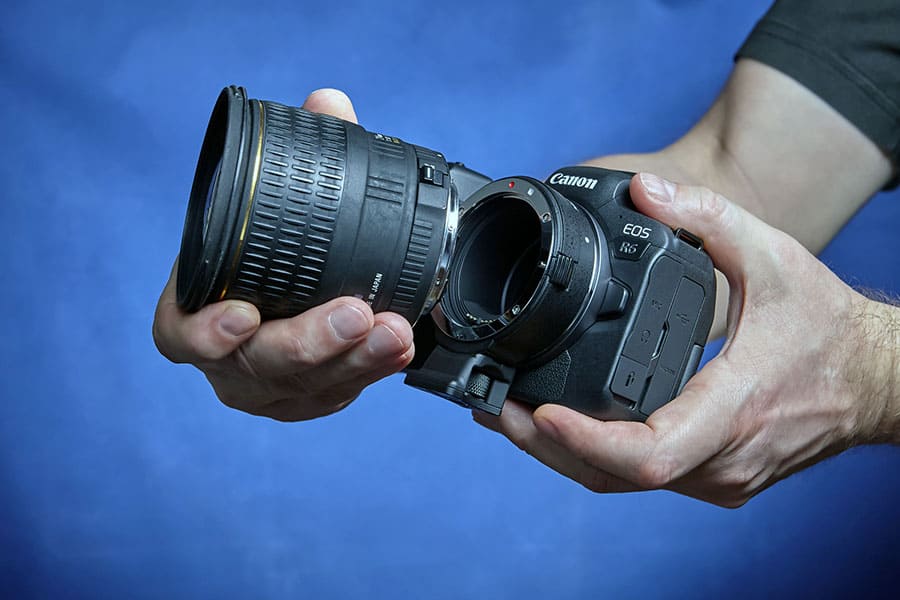
The Canon EF to RF adapter allows you to connect a standard SLR EF lens to your EOS R6.
The adapter even includes a multi-purpose ring, just like the newer RF lenses do.
It has electrical contacts to communicate with the lens, so your autofocus and image stabilizer will work as designed.
Still, keep in mind that newer RF lenses have a more advanced communication system than older EF designs do not.
Their autofocus works faster, and their IS systems work in conjunction with the camera’s in-body image stabilization systems.
These extra features aren’t going to happen with an older EF lens since the lens isn’t capable.
Using adapted lenses is an excellent choice for photographers who also shoot with legacy DSLRs and have a set of EF lenses.
But if you’re starting, it doesn’t make much sense to purchase EF lenses to use with the R6. It may cost a little more money, but an RF lens will give you the best performance out of your new camera.
Are L-series Lenses Worth the Money?
Canon’s L-series lenses are an industry standard for professional-grade equipment. They are built to the highest standards with the highest quality materials.
They are weather-sealed for use in extreme environments. Their optics are of greater quality than entry-level lenses, and these lenses feature the widest apertures that Canon offers.
But are they worth the extra price? For all the reasons to purchase L-series lenses, you cannot deny that they are extremely expensive.
They’re also the biggest and heaviest lenses that Canon makes. It’s not unusual for the outer filter of an L-series lens to be 77 or 87 millimeters in diameter.
If your goal is to have a portable camera that you carry around for distances, an L-series lens might not make the most sense.
Yes, it will make the absolute best images on your camera. But you will find that you take your camera with you less often than you would with a smaller, lighter lens.
Don’t get too caught up in the “best of the best” argument. Many Canon lenses make stellar images on the R6.
If you have the luxury to spend the money and can carry the lens with you comfortably, you will never regret the purchase of an L-series lens.
But there’s absolutely nothing wrong with compromising with a standard Canon or aftermarket lens, either.
Do you need Image stabilization (is) with the R6
Canon’s legacy stabilization system, like many other manufacturers, was built into the lenses.
Gyroscopes optically stabilize the lens to steady the image being projected onto the sensor. This system is known as IS or image stabilization. Canon includes this technology on many of its lens designs, including many newer RF lenses.
But the R6 and other new camera bodies also have IBIS or in-body image stabilization.
These systems steady the image right at the sensor, and it can work with any lens you have attached. That means whether you buy an IS lens or not, you’ll always have stabilization on the R6.
But Canon has cleverly designed their system to use both systems to the best of its ability.
If you have an IS lens on an R6 body, the camera will use the lens’s optical system. If you have a lens with no IS, the camera will use its own.
Even better, with some lenses, the camera will allow the two systems to work together for up to eight stops of reduction!
Three main scenarios make IS really important. The most common situation occurs in low-light photography.
The standard rule of thumb is that you should mount a camera on a tripod if the shutter speed’s denominator is less than the focal length being used.
For a 50 mm lens, if the shutter speed is less than 1/50th second, the camera should be on a tripod. If it’s not, the final image will lack sharpness and perhaps even be blurry.
With IS, it’s possible to handhold the camera at slower shutter speeds. Nothing is certain, but you can likely shoot sharp pictures down to 1/30 or perhaps 1/10th second with a good IS system.
In short, the system allows you to get more shots that are useable when shooting in low-light.
The IS system also helps photographers capture sharp images when in motion. If they are panning their camera to follow a moving target, the IS system can help keep it stable.
Likewise, it helps if shooting from a moving vehicle, like in a car or an airplane.
The final advantage of IS goes to the video shooter. The key to smooth panning or following shots is to have the camera mounted on a stable gimbal, along with a smooth IS system.
Many EF lenses have IS built in, but Canon did not build these older legacy systems with video in mind. As such, the noise of the IS system may be present on the video audio.
Focal Length and Aperture Considerations
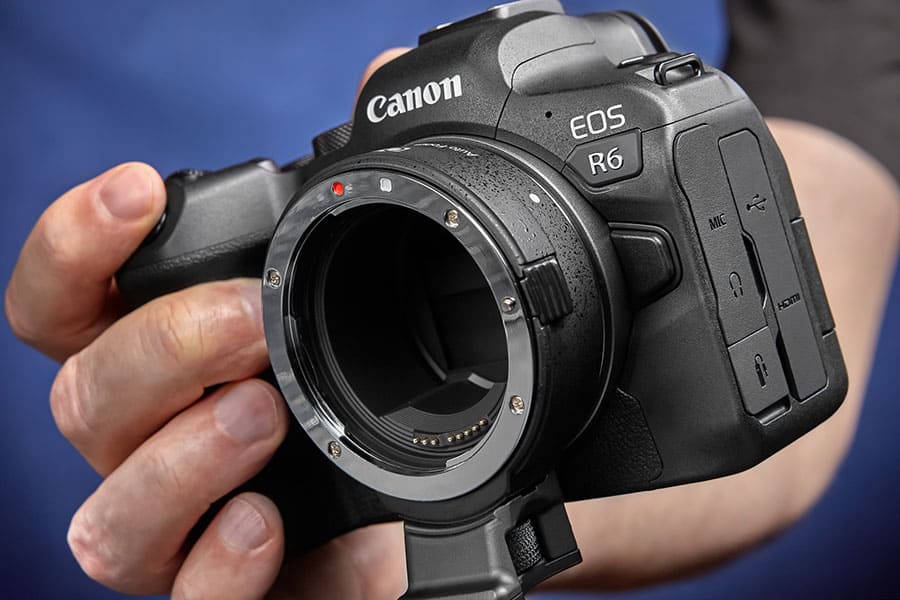
The focal length of a lens determines the field of view covered in the shot. All lens focal lengths are measured based on a full-frame camera sensor, so you don’t have to worry about crop factors as other camera systems do.
A normal 50 mm focal length lens reproduces the world approximately the same amount that our eyes do.
With this in mind, these lenses produce the most realistic images with the fewest distortions.
Fifty-millimeter lenses are often used in many types of photography, especially portraits or street photography. They’re also handy for reproducing artwork or capturing the most realistic images possible.
Anything lower than a 50 mm focal length is considered a wide-angle. To fit more image on the sensor, the lens must distort it in some way.
Some lenses have pronounced distortion, while others have very little. The most common wide-angle focal length is probably 35 mm, followed closely by 28 mm. Wide-angle lenses are most used and associated with landscape photography.
Lenses with focal lengths of more than 50 mm are considered “telephoto.” That means that they are zoomed in or enlarged.
An 85 mm lens is one of the most common lengths used for close-up portraits, as are 100 or 135 mm. Lenses of 200 mm or more are used for sports or wildlife photography–subjects that are small and may also be a long way from the camera.
The aperture of the lens is like the iris in our eyes. It’s an adjustable opening that allows light in.
When light is prevalent, it shrinks down; when light is low, the aperture opens wide. This also controls the depth of field, which is how much of the image is in focus.
The aperture is just one component of the exposure triangle.
When the aperture is large and lets in a lot of light, the shutter speed can be faster.
All of these are creative options that the photographer can play with on the R6.
The usual advice is to purchase the lens with the widest aperture that you can afford.
These are referred to as “fast” lenses because they let in a lot of light and allow you to shoot with faster shutter speeds. But these lenses will also be larger, heavy, and expensive.
Realistically, most photographers will be happy with an f/4.0 lens. This is a nice balance that gives you a lot of creative control while remaining relatively small. If you shoot in low-light often, you might want to upgrade to an f/2.8 zoom or an even faster prime lens.
There are many creative uses for fast lenses, but portrait photographers are often the most appreciative of them. With a subject in sharp focus and isolated from a blurred background, the classic portrait look is achieved by getting a shallow depth of field.
That’s done with a low f-stop and wide aperture, so these photographers are particular when they go lens shopping.
Prime Versus Zoom Lenses
Lenses come in two principal forms, prime or zooms.
Prime lenses have one focal length, while zooms allow the photographer to select from a range of focal lengths.
Most photographers are used to being able to zoom in on even the most basic cameras, so why would anyone ever put a prime lens on an R6?
Prime lenses have quite a bit going for them. Their most attractive feature is their image quality.
Because the designers only have to make it work at one focal length, they can perfect the optics.
Zoom lenses are always a compromise. They never hold the same level of sharpness through the entire range of their zoom.
For the same reason, prime lenses are usually faster than zooms. The fastest zoom lenses that Canon makes are f/2.8, while the fastest primes they make are f/1.2. There are even some faster primes made by other manufacturers that are f/0.95.
If you compare two lenses with the same basic specs, the prime lens will be smaller, lighter, and less expensive than a zoom lens with the same capabilities. Some primes are built to be simple, small, and cheap.
Building your camera kit
Now you have an idea of some of the factors that go into picking a lens for your R6. But how do you know which lenses will work best for you?
The most significant factor you need to figure out how and where you’re going to want to use the camera and lens combination.
Many photographers pick different lenses for each different task they need to complete, while others prefer a one size fits all approach.
It’s a personal decision based on your skill level, budget, and what sort of performance and portability you need out of your R6.
Make a list of your priorities and work out which lenses can help you meet your goals. Do you need something ultra-light and portable? Or do you need the absolute best image quality and fastest aperture?
Canon EOS R6 Specifications & Resources
| Price | ||
|---|---|---|
| MSRP | $2499 (body only), $2899 (w/24-105mm F4-7.1 lens), $3500 (w/24-105mm F4 lens) | |
| Body type | ||
| Body type | SLR-style mirrorless | |
| Sensor | ||
| Max resolution | 5472 x 3648 | |
| Image ratio w:h | 1:1, 4:3, 3:2, 16:9 | |
| Effective pixels | 20 megapixels | |
| Sensor photo detectors | 21 megapixels | |
| Sensor size | Full frame (36 x 24 mm) | |
| Sensor type | CMOS | |
| Processor | Digic X | |
| Image | ||
| ISO | Yes, 100-102400 (expands to 204800) | |
| Boosted ISO (minimum) | 50 | |
| Boosted ISO (maximum) | 204800 | |
| White balance presets | 8 | |
| Custom white balance | Yes | |
| Image stabilization | Sensor-shift | |
| Image stabilization notes | Works with lens-based IS systems for maximum shake reduction | |
| CIPA image stabilization rating | 8 stop(s) | |
| Uncompressed format | RAW | |
| JPEG quality levels | Fine, normal | |
| Optics & Focus | ||
| Autofocus |
| |
| Manual focus | Yes | |
| Number of focus points | 1053 | |
| Lens mount | Canon RF | |
| Focal length multiplier | 1× | |
| Screen / viewfinder | ||
| Articulated LCD | Fully articulated | |
| Screen size | 3″ | |
| Screen dots | 1,620,000 | |
| Touch screen | Yes | |
| Screen type | TFT LCD | |
| Live view | Yes | |
| Viewfinder type | Electronic | |
| Viewfinder coverage | 100% | |
| Viewfinder magnification | 0.76× | |
| Viewfinder resolution | 3,690,000 | |
| Photography features | ||
| Minimum shutter speed | 30 sec | |
| Maximum shutter speed | 1/8000 sec | |
| Maximum shutter speed (electronic) | 1/8000 sec | |
| Aperture priority | Yes | |
| Shutter priority | Yes | |
| Manual exposure mode | Yes | |
| Subject / scene modes | No | |
| Built-in flash | No | |
| External flash | Yes (via hot shoe) | |
| Continuous drive | 20.0 fps | |
| Self-timer | Yes | |
| Metering modes |
| |
| Exposure compensation | ±3 (at 1/3 EV, 1/2 EV steps) | |
| AE Bracketing | ±3 (2, 3, 5, 7 frames at 1/3 EV, 1/2 EV steps) | |
| WB Bracketing | Yes | |
| Videography features | ||
| Format | MPEG-4, H.264, H.265 | |
| Modes |
| |
| Microphone | Stereo | |
| Speaker | Mono | |
| Storage | ||
| Storage types | Dual SD slots (UHS-II supported) | |
| Connectivity | ||
| USB | USB 3.2 Gen 2 (10 GBit/sec) | |
| USB charging | Yes | |
| HDMI | Yes (micro HDMI) | |
| Microphone port | Yes | |
| Headphone port | Yes | |
| Wireless | Built-In | |
| Wireless notes | 802.11b/g/n + Bluetooth | |
| Remote control | Yes | |
| Physical | ||
| Environmentally sealed | Yes | |
| Battery | Battery Pack | |
| Battery description | LP-E6NH lithium-ion battery & charger | |
| Battery Life (CIPA) | 360 | |
| Weight (inc. batteries) | 680 g (1.50 lb / 23.99 oz) | |
| Dimensions | 138 x 98 x 88 mm (5.43 x 3.84 x 3.48″) | |
| Other features | ||
| Orientation sensor | Yes | |
| GPS | None | |
Conclusion
The EOS R6 is a fantastic camera that offers the latest technologies. Mirrorless is the way of the future, and these RF mount lenses prove it with their cutting edge designs.
What lens are you hoping to see from Canon in the future? Let me know in the comments below.

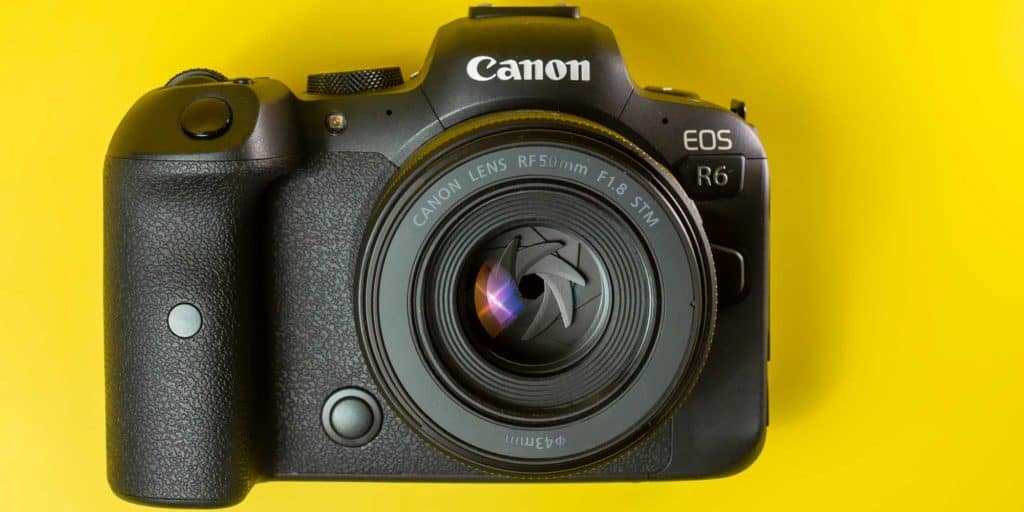
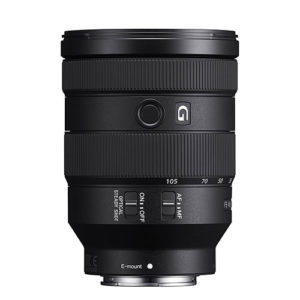
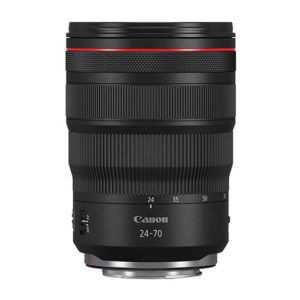

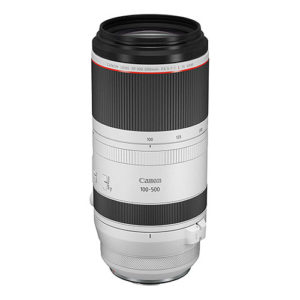
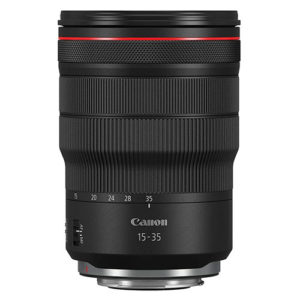
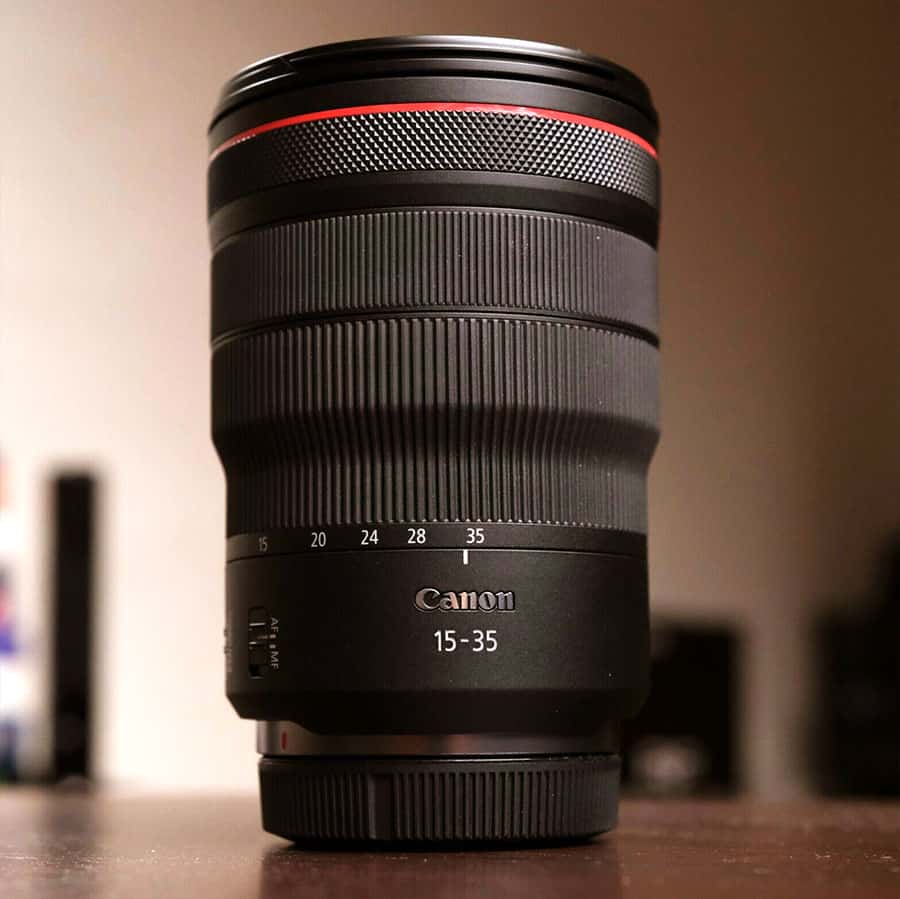
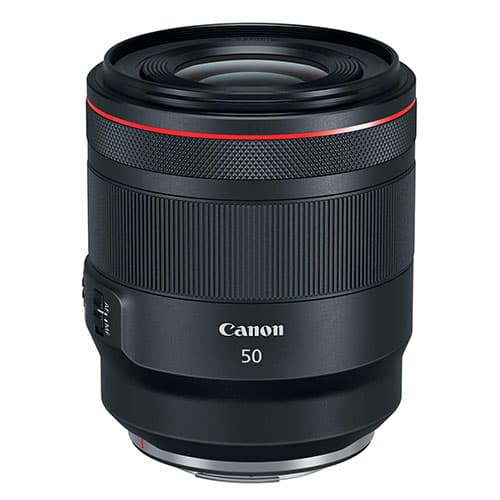
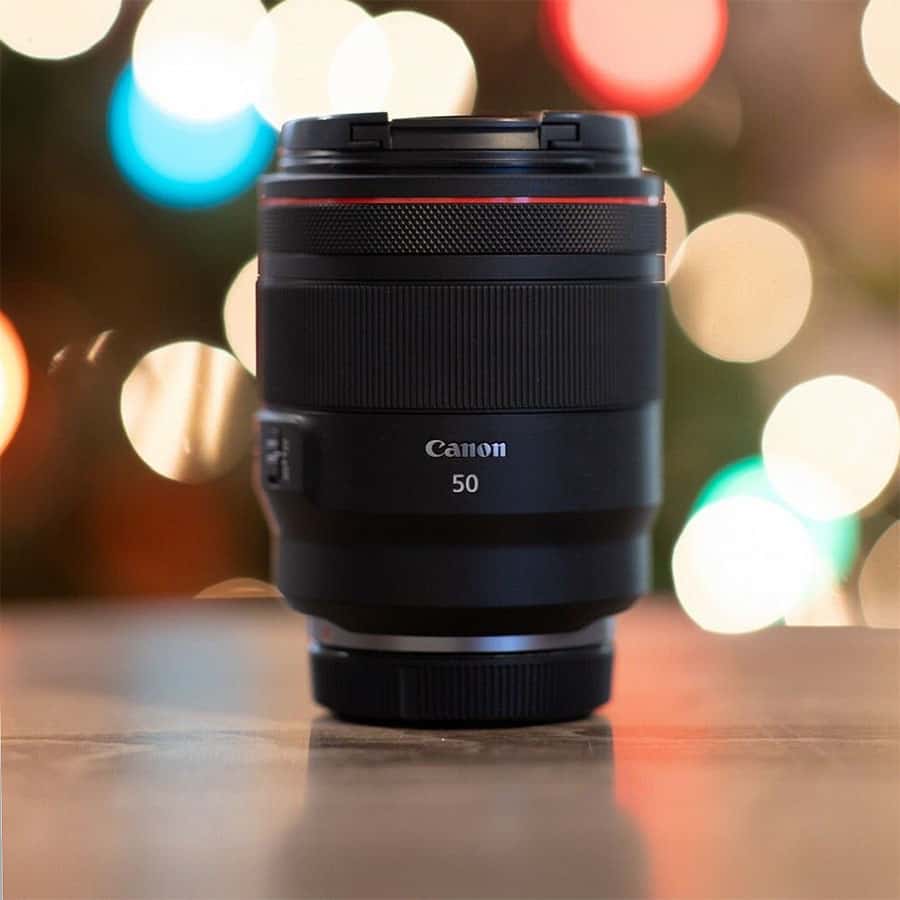
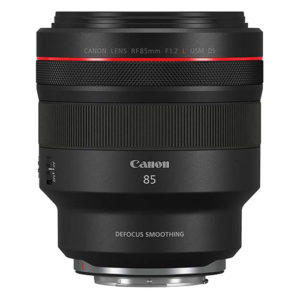
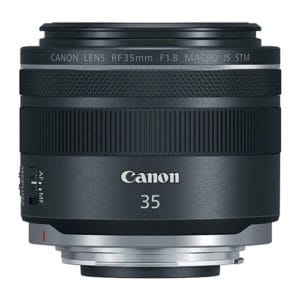
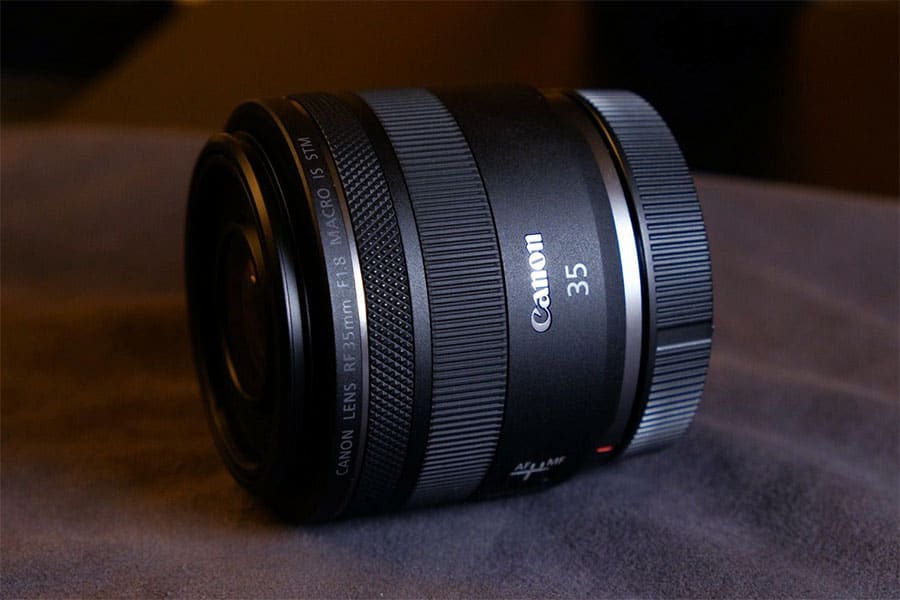
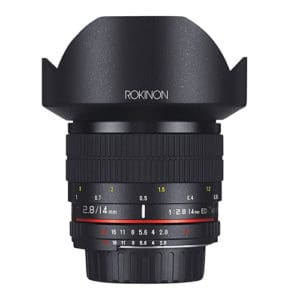
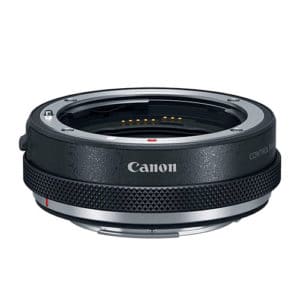

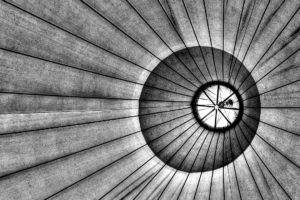

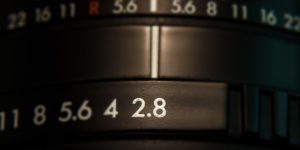
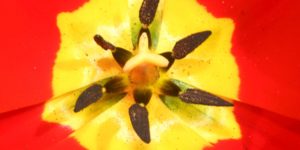
1 thought on “Top 9 Best RF Lenses for Canon EOS R6”
Rudy,
Thanks for this article. I am looking a purchasing the Canon R6 and was wondering the answers to this very question since I have several EF lenses. One of the best explanations I could have found.